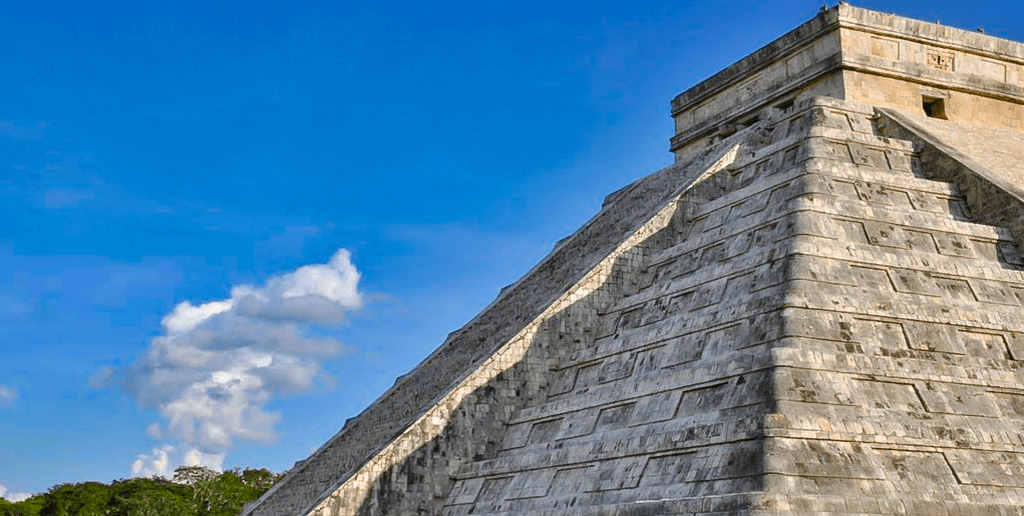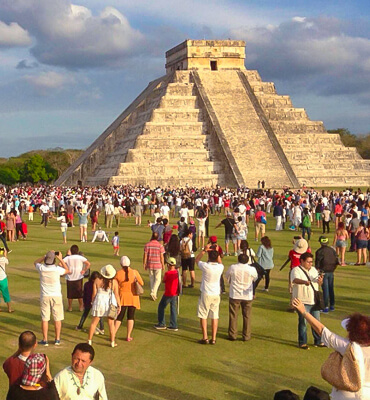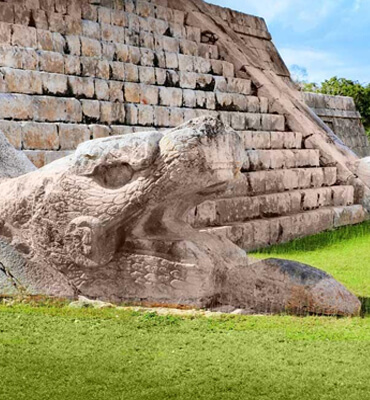
CANCUN December 26, 2024
About Chichen Itza
Chichen Itza was important in Mayan society. Today its ruins include the Pyramid of Kukulcan, also known as El Castillo. This amazing building shows how well ancient engineers and astronomers worked, making it one of the modern world's wonders. The Mayans made this pyramid to display their architectural abilities and understanding of celestial cycles, crucial for farming and religion.
The phenomenon of the spring equinox in Chichen Itza
This special event marks the beginning of spring in the northern hemisphere. It happens when the sun reaches its highest point in the sky after crossing the celestial equator.
At sunset, the sun's rays make it look like a snake, Kukulcan, is going down the stairs of El Castillo. The Mayans showed their ability to combine astronomy, religion, and architecture by aligning the sun with the pyramid's design.
People have different beliefs about this day. Some think they feel good energy, so they wear white and do yoga together. Others believe witches get stronger and celebrate with songs, energetic cleansing, and burning incense.
It marks the start of the planting season. It helps farmers with traditional farming. It advises them when to cultivate and when to harvest their crops.
Experience the spring equinox
Seeing the spring equinox in Chichen Itza is a special experience that shows the mystery and greatness of the Mayan civilization.
As the day calms down and excitement grows, the sun sets, casting shadows that gradually form the shape of Kukulcan (the Feathered Serpent). The crowd cheers as they watch Quetzalcoatl descend, which takes about 5 hours.
Light refracts on the staircase, forming 7 triangles. The snake head sculpture at the base completes the snake's body, pointing towards the sacred cenote of Chenku. moves forward, linking us to ancient people who also celebrated this event.

Information for tourists
Planning your visit to Chichen Itza Mayan ruins during the spring equinox requires some forethought. Arrive early for a good spot to see the equinox on March 21. This year, you can witness the majesty of Kukulkan around 4:00 pm.
Check out tour details ahead of time online or at your hotel's tour agency to find the best one for you. You can read about the tour to Chichen Itza that Solaris travel has for you.
You can see this amazing sight from the open area of the archaeological site, but keep in mind that you will not be the only person there. You will sit next to thousands of people so you have to have a little patience and tolerance.
Use eco-friendly sunscreen and wear a hat (no umbrellas, be considerate of others who want to watch the show).The Mayans used steps to symbolize their calendar months. Each month had 20 days, so there were 18 steps for the months. The last 5 steps represented a significant time called Uayeb, known as "The 5 disastrous days" in the Mayan calendar.
During the equinox, attendees sit to witness it. Please don't stand up to take photos. Be aware that there are people in front, to the side and behind you.
You can see this amazing sight from the open area of the archaeological site, but remember there will be others too.
Interesting Facts about Chichen Itza.
The Mayans were good at math and studying the stars. El Castillo pyramid shows this. It has 91 steps on each side, plus one more leading to the temple. This adds to 365, the same as our calendar.
For the ancient Mayans, the steps represent the “18 bodies” or months of their calendar (each month had 20 days) and the last 5 steps represent “The 5 disastrous days”, also known as Uayeb, were an important time period in the Mayan calendar. Those days brought bad luck and were associated with the underworld, death, and chaos.
Legends say that the manifestation of God Quetzalcoatl revealed the Spring Equinox to the Mayans. He appeared on earth and communicated through the high priest.
Watching Quetzalcoatl descend takes about 5 hours. Light refracts on the staircase, forming 7 triangles. The snake head sculpture at the base completes the snake's body, pointing towards the sacred cenote of Chenku.
We hope tourists in March can see this spectacle. If it's not possible to come this year, consider booking your vacation for next year to witness it. Now, it's time to plan ahead and secure my spot to see this remarkable show.
PREVIOUS POST NEXT POST